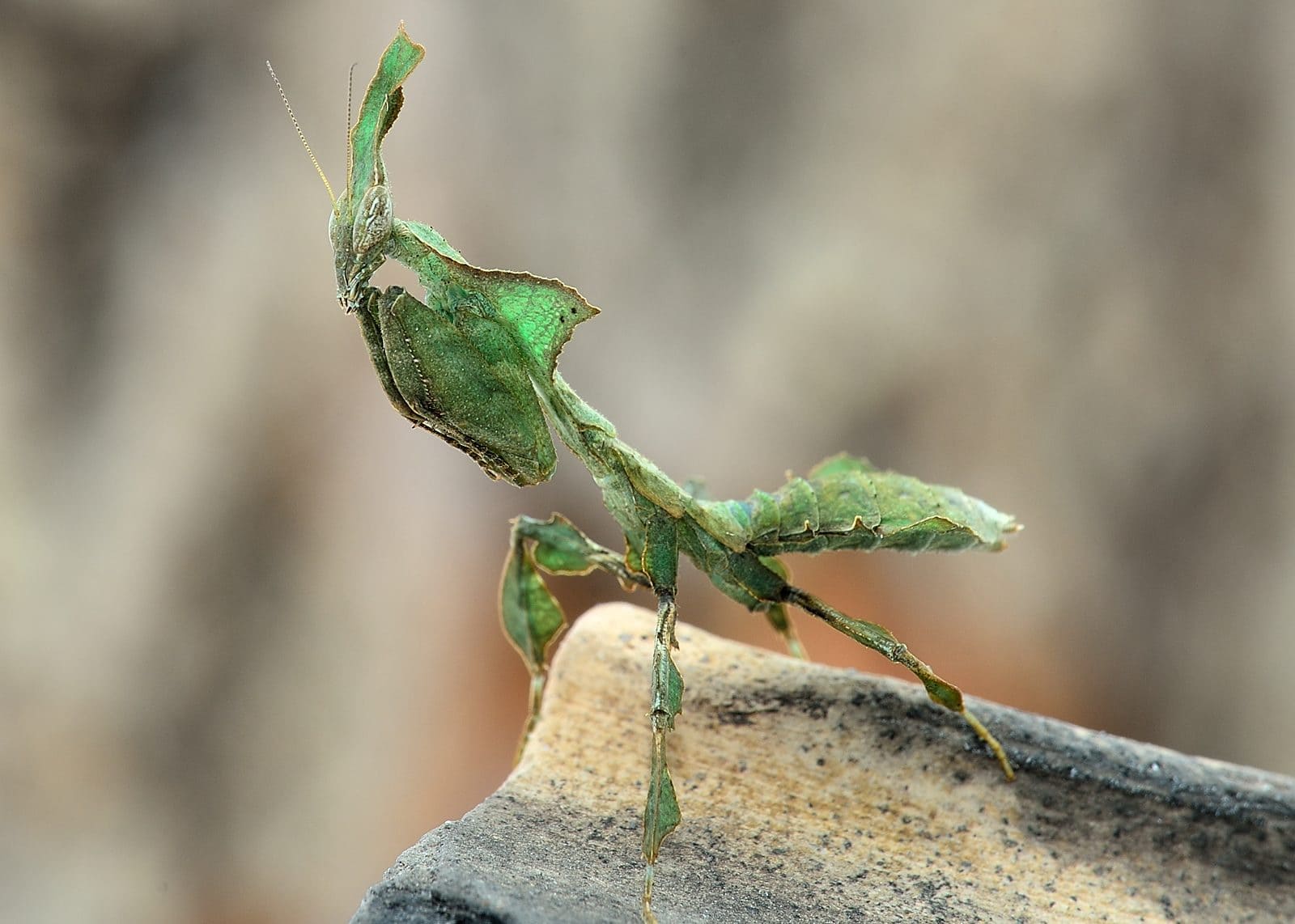General Information:
If you like bizarre and special, you can’t really get past Phyllocrania paradoxa. The high crown and also its appearance in shape and colour camouflage the ghost mantis perfectly as a withered leaf. I always catch myself looking over the animals when I look into the terrarium, as they merge almost perfectly with the environment.
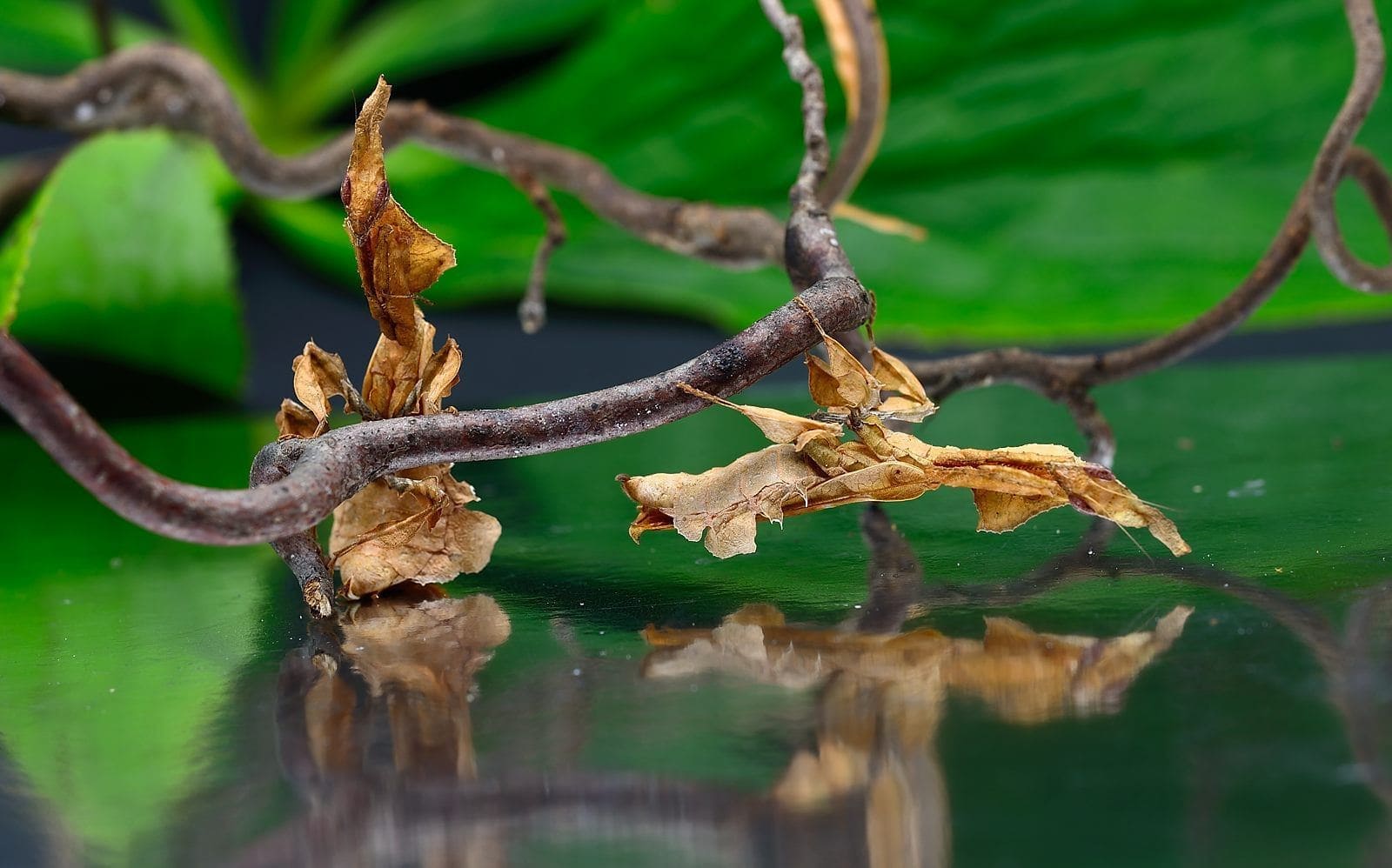
They also offer you more in terms of colour than other mantids. From brown over beige to green Phyllocrania paradoxa are available and provide a welcome change in the terrarium. Because with the possible group keeping another positive aspect is added, that the interest of the praying mantis rises with every mantid holder.
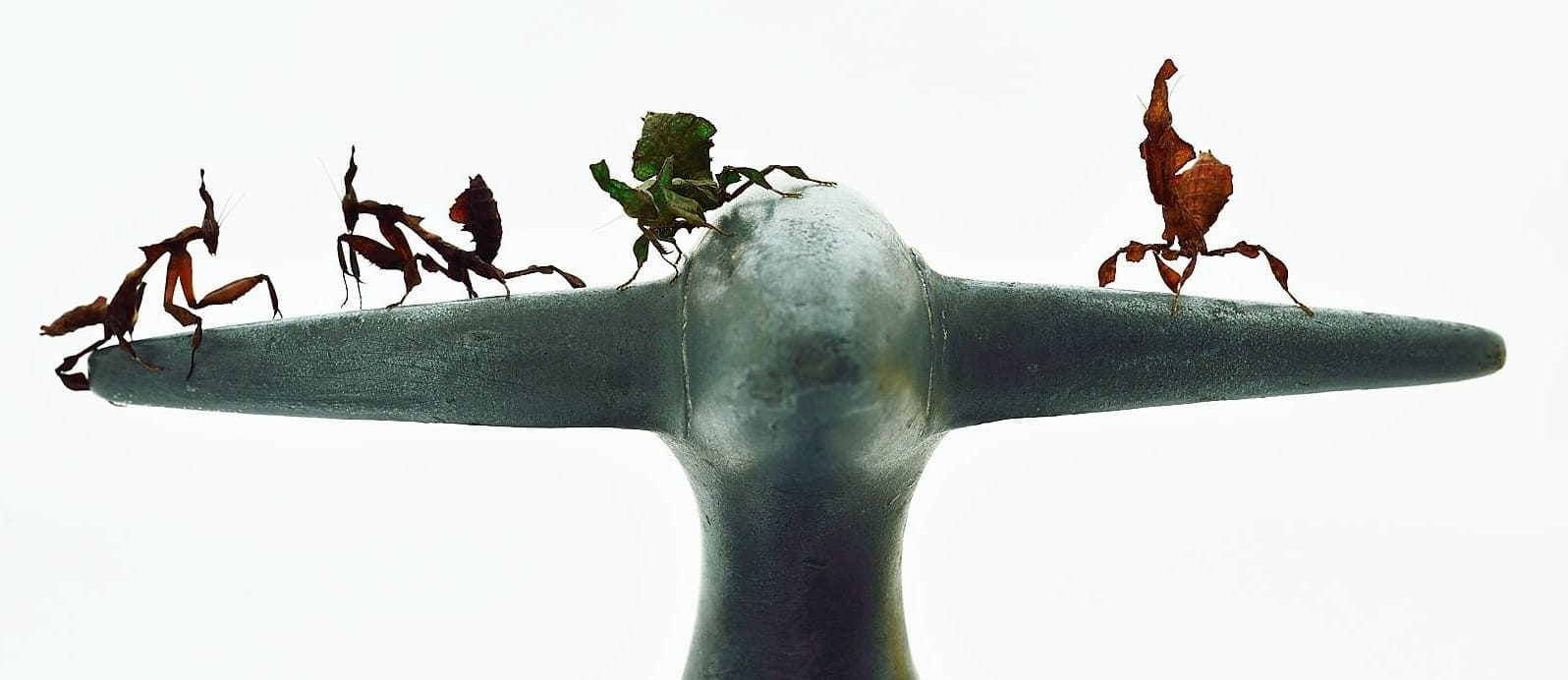
The coloration has nothing to do with the genetics of the parent animals, but small different climatic conditions within a terrarium play a role. Phyllocrania paradoxa forgives every beginner the one or other mistake that you will surely make at the beginning and is almost perfect for every beginner! Due to the relatively undemanding and dry attitude you can slowly get to grips with the hobby of mantid keeping. Right at the beginning you will have several positive experiences which may motivate you later to try a more demanding species.
Size / life expectancy / moult:
males: 5.0 cm / total 7.5 months (5.5 months to adult + 2 months as adult) / approx. 6 moults
females: 5,0 cm / total 12 months (6 months to adult + 6 months as adult) / approx. 7 moults
Food:
L1/L2: Small fruit flies Drosophila melanogaster
L3/L4: Large fruit flies Drosophila hydei
L5/L6: Greenbottle flies Lucilia sericata
L7/adult: blowflies Calliphora sp.
Living space:
The ghost mantis can be found on strongly branched shrubs, bushes, trees and in open terrain. It has a relatively large catchment area that extends south of the Sahara to Madagascar. They populate relatively dry areas and have little to no requirements for humidity. The temperature there is usually between 25-30°C during the day and 20°C at night. The large catchment area is a further indication that the ghost mantis is not particularly susceptible to minor fluctuations.
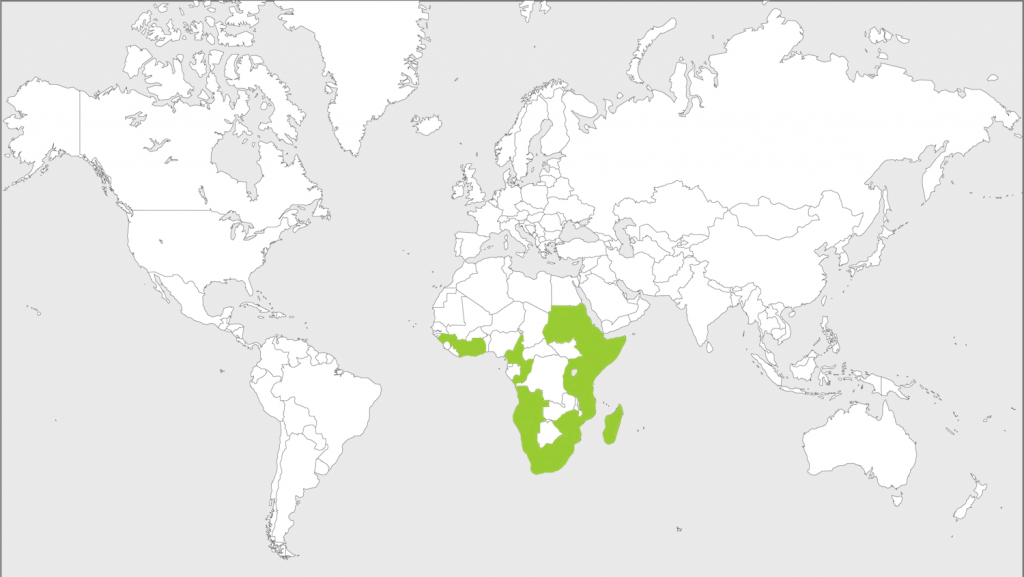
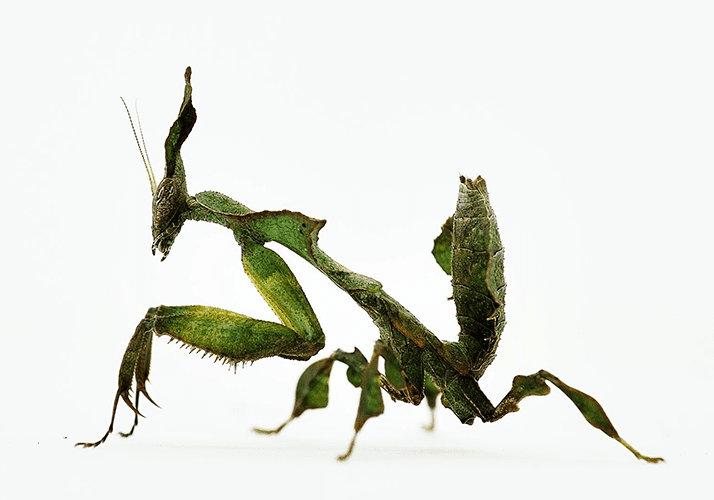
Geistermantiden kaufen
✓ Höchste Qualität
✓ Stammt aus eigener Zucht
✓ Lebendankunftsgarantie
visit shopKeeping in Insectarium:
L1/L2:
I keep them in groups at this stage in a 500 g/ml packaging cup. Of course you can also incubate them directly in a BraPlast can and also pull them up there. I cut out an opening in the lid and used organza with hot glue as ventilation grid. For safety reasons I added a ventilation at the side. In the beginning I use untreated wood wool as climbing material and kitchen towels as flooring. There must always be twice the size of the mantids in place at the bottom so that the moulting can run smoothly. Every 3-4 days I spray the substrate slightly. Better start spraying a little more carefully and approach slowly. Stagnant moisture is more dangerous for your animal than a slightly lower humidity. There should always be enough Drosophilas as food in the container. I change the kitchen cloth at least once a week, depending on the density of the crew.
ab L3/L4:
I use BraPlast tins with the dimensions 18,5×18,5×19,0cm. There should be enough branches or climbing possibilities in the upper area.
If you take branches from nature, put them in the microwave for 20 seconds or in the oven at 100°C for 15 minutes. This will kill all the mites and other parasites that you have brought with you and that can cause you problems later on. The motto is also valid there, less is more. Praying mantises are lurkers, you should not pack it full. Leave space for moulting, as this moment is the most dangerous time in the life of your guest. I will go into more detail on the topic of terrarium size and group housing in the article „Terrarium size and ventilation“. You are also welcome to watch the video of the article.
Breeding:
Sex determination:
The sex determination can be reliably carried out from L4/ L5 onwards. Females have a large, relatively straight crown, while males have a longer, thin, curved crown. The antennae of the males are longer and thicker than those of the females, likewise the praises and pronotum of the female and the entire abdomen are wider than those of the male. If you are unsure, you are welcome to send me photos by e-mail and I will determine the sex for you.

If you want to know more about sex determination, you can read more about it in the article about mantis sex determination
Sexual maturity:
The females become adult after about 7 moultings, thus in L8. Male Phyllocrania paradoxa after 6 moults, thus in L7. Females need another 2 weeks after moulting to be ready for mating. Males only 1 week.
This means that males become sexually mature one week before moulting. This is a rather unproblematic period, because the males live for about 2 months after moulting.
The difference in sex can be seen from L4 at the latest. So you can keep the males a bit cooler than the females as a precaution. Please remember not to go below 20°C.
So about 2 weeks after the moulting the animals are ready for mating.
Mating:
Breeding is relatively easy, about 2 weeks after the adult moult you put males and females together and wait, the females should be well fed as usual. If kept in a group, the whole thing is unnecessary and fertilization is an unstoppable by-product of keeping together.
Often the male sits on top of the female after the bounce, just sitting there without copulating. It can take several hours for the male to make his first attempts at copulation. Thus the mating can last several days. The female will then stick some clutches of eggs to branches or side walls within several weeks. The clutches and young animals are kept under the same conditions as the adults. Also with the larvae the humidity should not rise excessively and I spray there also only every 3-4 days briefly into the insectarium.
Oothek storage:
The Ootheca can contain up to 50 eggs, but the average is 10-40 eggs. In contrast to the free ootheca of cockroaches, the mantis stick their roundish, elongated, shield-like, drop-shaped or packet-like ootheca to different substrates. Often they are attached to the climbing facilities or to the gauze cover. For this purpose they first apply a protein-containing secretion to the substrate. With spiral-shaped movements of the abdomen, even more of this foamy secretion is now released, whereby the eggs are now laid one after the other in the same in such a way that they are in a certain arrangement to each other and each occupy a compartment of the ootheca. Finally the secretion is pulled out in a more or less long thread before it hardens to a sponge-like, very firm cocoon. Along the surface lies the thinnest walled area from which the nymphs hatch. It is usually visible as a large-pored, seam- or comb-like strip. You can find more about the Oothek here.
Incubation:
The hatching is strongly temperature-copied. At 29° C the nymphs hatch after about 4 weeks. It is recommended to offer the newly hatched Phyllocrania Paradoxa nymphs directly the first food.



